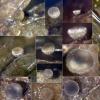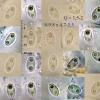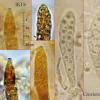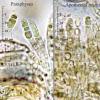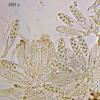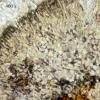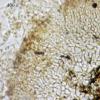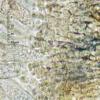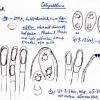
19-12-2025 10:10
Patrice TANCHAUDBonjour, récolte réalisée en milieu dunaire, a

18-12-2025 17:23
 Bruno Coué
Bruno Coué
Bonjour,je serais heureux d'avoir votre avis sur c

18-12-2025 21:17
Pol DebaenstThe identification took me to Byssonectria deformi

18-12-2025 18:07
Margot en Geert VullingsThese plumes were found on rotten wood.They strong

17-12-2025 18:35
 Michel Hairaud
Michel Hairaud
Bonjour à tous/Hi to everyone I am passing along

15-12-2025 15:48
 Danny Newman
Danny Newman
Melanospora cf. lagenaria on old, rotting, fallen

15-12-2025 15:54
 Johan Boonefaes
Johan Boonefaes
Unknown anamorph found on the ground in coastal sa

15-12-2025 21:11
 Hardware Tony
Hardware Tony
Small clavate hairs, negative croziers and IKI bb

15-12-2025 07:09
 Danny Newman
Danny Newman
indet. Rutstroemiaceae sp. on unk. fallen leavesMc
Asco on Potentilla erecta leaves
Enrique Rubio,
26-05-2009 19:35
What's tour opinion about this small (up to 0.3 mm) ascomata, turbinate, witish, later yellowish brown, and finally greyish- blue by the existence of an exudate blueish?. I think could be a Calycellina species unknow for me.
They grew on overwintered leaves of Potentilla erecta.
Many thanks!
Enrique Rubio,
26-05-2009 19:37
Enrique Rubio,
26-05-2009 19:39
Enrique Rubio,
26-05-2009 19:40
Enrique Rubio,
26-05-2009 19:43
Enrique Rubio,
26-05-2009 19:47
Re:Asco on Potentilla erecta leaves
Blueish exudate seems to invade the texture of older ascomata and it does them to take greyish-blue hues.
Hans-Otto Baral,
26-05-2009 21:51

Re:Asco on Potentilla erecta leaves
Hi Enrique
wonderful! This reminds me of an unsolved find I made on an unidentified plant (?Cyperaceae) in the subalpine Pinus mugo vegetation (the drawing is also on the DVD, in dir. Calycellina). Now with your substrate it might be possible to identify this, in case it is host-specific.
In my database I see a Naeviopsis artcica on Potentilla leaves: spores 11-18 x 5-6 (too big), also asci inamyloid.
Even when I search for Rosaceae leaves I find nothing. A Psilocistella alchemillae with spores 9.5-12 x 4-4.5 µm (Raitviir 2003) would probably hardly fit.
Sorry, no idea. I also think it is a Calycellina. But I did not note any bluish tint in my find.
If you wish you can send me your images in a somewhat higher resolution (1.5-2x). Was it also at high altitude?
Zotto
wonderful! This reminds me of an unsolved find I made on an unidentified plant (?Cyperaceae) in the subalpine Pinus mugo vegetation (the drawing is also on the DVD, in dir. Calycellina). Now with your substrate it might be possible to identify this, in case it is host-specific.
In my database I see a Naeviopsis artcica on Potentilla leaves: spores 11-18 x 5-6 (too big), also asci inamyloid.
Even when I search for Rosaceae leaves I find nothing. A Psilocistella alchemillae with spores 9.5-12 x 4-4.5 µm (Raitviir 2003) would probably hardly fit.
Sorry, no idea. I also think it is a Calycellina. But I did not note any bluish tint in my find.
If you wish you can send me your images in a somewhat higher resolution (1.5-2x). Was it also at high altitude?
Zotto
Enrique Rubio,
27-05-2009 11:20
Re:Asco on Potentilla erecta leaves
Hi Zotto. I already had seen your drawings of HB 5850b, but I think that the distribution of polar guttules is very different. Those of my collection seem to be constant and very peculiars, not as that you show in your drawings.
By the other hand, Psilocistella alchemillae is in Raitviir's description (2004) a IKI and Mlz. (-) species.
Our collection was made at 650 m of altitude.
I send you my images at bigger resolution and many thanks again.
Enrique
By the other hand, Psilocistella alchemillae is in Raitviir's description (2004) a IKI and Mlz. (-) species.
Our collection was made at 650 m of altitude.
I send you my images at bigger resolution and many thanks again.
Enrique
Hans-Otto Baral,
27-05-2009 21:35

Re:Asco on Potentilla erecta leaves
Hi Enrique
it is good that you pay so much attention to guttules! You may be right, they are often very constant, but sometimes the next collection deviates a bit, and is anyhow the same species. But in my case I think the substrate must be very different (I noted the stem to be triangular), so most probably a monocot. On the leaf there was also a ?Moellerodiscus.
This is one of many collections where I did not have enough time for a thorough study (and no camera yet). Too many finds to study at one day. When I had read the Raitviir paper on Greenland ascos, I compared my find with Psilocistella macrospora. That species is treated after P. alchemillae, and is IKI deep blue. However, I did not see any haírs.
Raitviirs comment to alchemillae reads "IKI and MLZ not blue". This is a strange phrase. Better would have been "negative" because IKI-red is also not blue.
I feel Raitviir's taxa must be recollected from similar habitats in order to clarify their generic relation. We have no info on the paraphysis and hair contents, particularly. His comments on ascus croziers are also not fully trustworthy. If he was right then the two Psilocistellas differ by simple septate asci.
Zotto
it is good that you pay so much attention to guttules! You may be right, they are often very constant, but sometimes the next collection deviates a bit, and is anyhow the same species. But in my case I think the substrate must be very different (I noted the stem to be triangular), so most probably a monocot. On the leaf there was also a ?Moellerodiscus.
This is one of many collections where I did not have enough time for a thorough study (and no camera yet). Too many finds to study at one day. When I had read the Raitviir paper on Greenland ascos, I compared my find with Psilocistella macrospora. That species is treated after P. alchemillae, and is IKI deep blue. However, I did not see any haírs.
Raitviirs comment to alchemillae reads "IKI and MLZ not blue". This is a strange phrase. Better would have been "negative" because IKI-red is also not blue.
I feel Raitviir's taxa must be recollected from similar habitats in order to clarify their generic relation. We have no info on the paraphysis and hair contents, particularly. His comments on ascus croziers are also not fully trustworthy. If he was right then the two Psilocistellas differ by simple septate asci.
Zotto
Enrique Rubio,
28-05-2009 20:25
Re:Asco on Potentilla erecta leaves
Hi, Zotto:
I understand that your time is valuable, and I do not want to overload you of work. I understand perfectly that you cannot have seen all the fungi that our we show. I asked you about this fungus because its habitat and aspect are very peculiars.
By the other hand, I think you are right.:Raitviir's descriptions are not very satisfactory in many aspects.
Many thanks
Enrique
I understand that your time is valuable, and I do not want to overload you of work. I understand perfectly that you cannot have seen all the fungi that our we show. I asked you about this fungus because its habitat and aspect are very peculiars.
By the other hand, I think you are right.:Raitviir's descriptions are not very satisfactory in many aspects.
Many thanks
Enrique
Hans-Otto Baral,
28-05-2009 21:51

Re:Asco on Potentilla erecta leaves
No problem!
Calycellina is one of the many genera that need monographic revision. Surely there are many un- or badly described species.
Zotto
Calycellina is one of the many genera that need monographic revision. Surely there are many un- or badly described species.
Zotto

